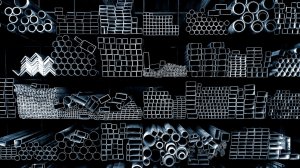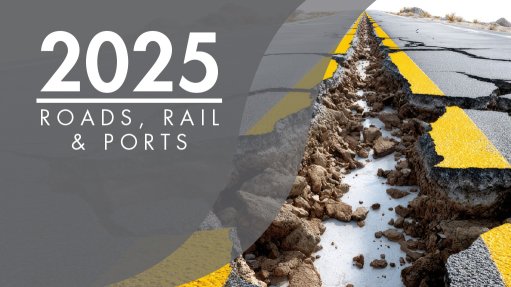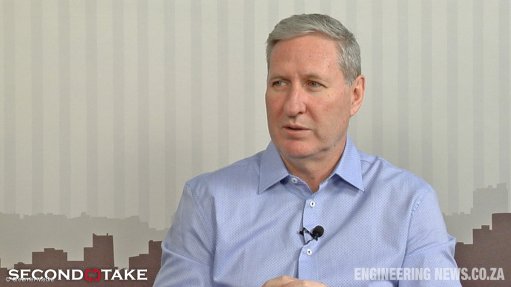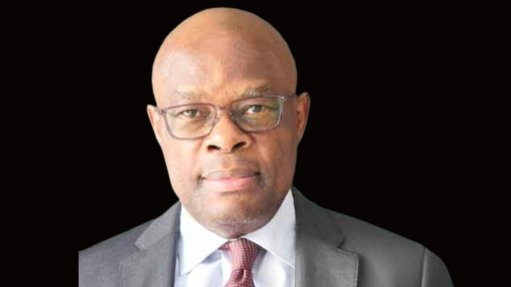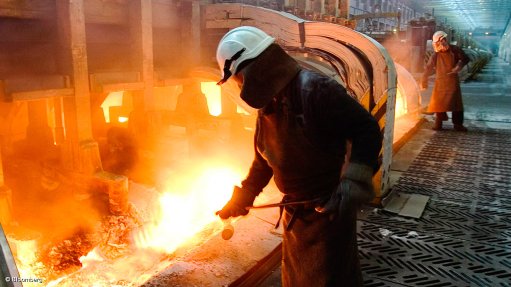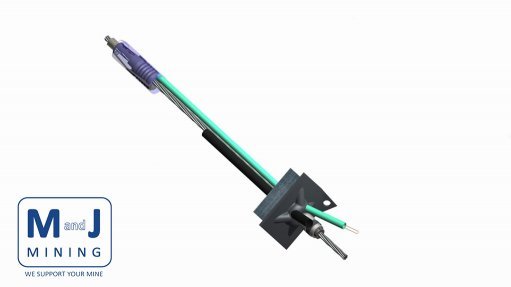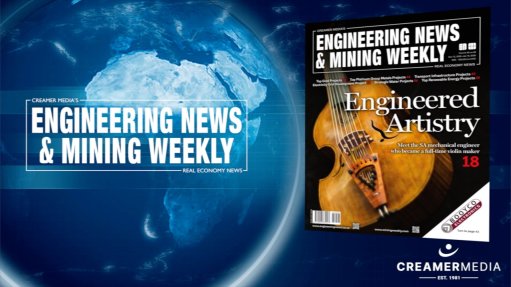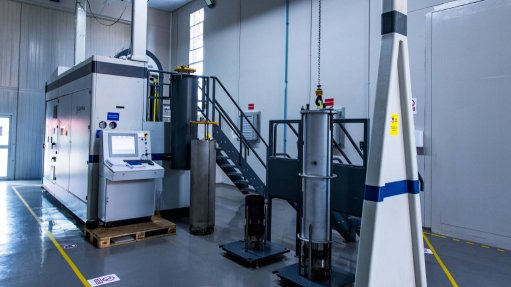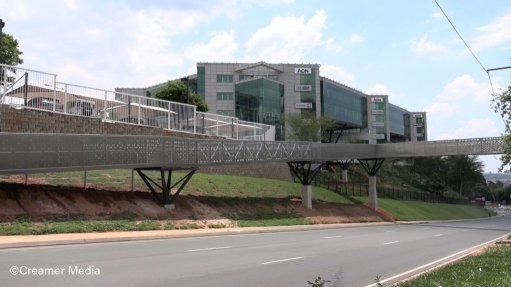Steel localisation should remain focused on machinery, automotive, construction industries, experts say
The main contribution from the steel value chain to South Africa’s GDP comes from machinery and automotive production, along with the construction industry. From this standpoint, maximising the developmental impact of localisation requires a focus on these relatively advanced industries, Trade and Industrial Policy Strategies (TIPS) senior economist Dr Neva Makgetla has said.
Speaking as part of an expert panel during a TIPS webinar on June 5 that sought to explore options for the future of South Africa’s steel industry, she stated that crude steel production in South Africa was undergoing a structural crisis, driven by stagnant domestic and export demand combined with rapidly rising costs at ArcelorMittal South Africa (AMSA), the country’s only integrated steel producer.
AMSA's local sales have declined sharply and the company has written off various assets after recording losses in seven of the past 12 years.
These challenges had been compounded by increased imports, particularly from China, which benefits from cheaper access to iron-ore and coking coal. Makgetla added that the shift toward lighter materials and digital technologies had reduced the steel intensity of South Africa’s GDP.
She noted that the export parity prices for iron-ore, coal and basic steel had increased, placing additional pressure on domestic producers. She argued that the justification for government support of crude steel production was weak from an economic standpoint, but there were strong grounds for supporting downstream steel-based manufacturers, particularly those producing inputs for machinery, vehicles and construction.
While the steel industry’s direct contribution to GDP, employment and exports remained limited, she said it remained essential to public infrastructure and to the health of advanced manufacturing sectors.
The panellists, which included International Trade Administration Commission of South Africa chief commissioner Ayabonga Cawe and Cape Gate Mill chairperson Oren Kaplan, agreed that several strategic decisions and difficult trade-offs needed to be considered to stabilise and expand the domestic steel industry within a rapidly shifting global trade landscape.
Kaplan specifically noted that AMSA's struggles were "haunting" the steel industry and required good solutions instead of bailouts.
Makgetla estimated that upgrades at AMSA to bring it into a position of true industry competitiveness could cost about R15-billion, which was a significant investment in light of limited budget resources.
The consensus between the panellists was that any potential support for AMSA should be highly conditional on significant restructuring of the company, and that the funds should be focused on technological upgrades.
Moreover, any assistance needed to be carefully aligned with broader industrial policy goals and aimed at supporting downstream manufacturers.
Makgetla noted that the US’s recent imposition of a 50% tariff on all steel imports in early June had introduced further volatility to global markets, which in turn put more pressure on the local steel market.
US President Donald Trump indicated that the move was designed to protect and rejuvenate the US industry, though the policy had drawn criticism from international partners.
Concurrently, China, the world’s largest steel producer, reduced its steel output by 7% in April as demand waned and overcapacity continued to weigh on the sector. The economic slowdown in China, combined with growing uncertainty in global trade, has further diminished South Africa’s competitive position in steel manufacturing.
In the EU, steel import volumes have surged as a result of global trade distortions. The European Commission’s 2025 import surveillance report identified a significant increase in low-cost imports of stainless steel and related products, triggering concerns among domestic producers.
In this global context, Makgetla and other panellists emphasised the need for South Africa to adopt a multipronged strategy developed in collaboration between policymakers and industry stakeholders.
The first component of this strategy should be the development of a comprehensive national plan that realistically assesses the current and future size of the market, supports the growth and competitiveness of downstream manufacturers and prioritises technological upgrades and innovation across the value chain.
Second, the implementation of flexible policy mechanisms is identified as crucial. These should provide temporary support for transitioning technologies while promoting cost reductions throughout the industry. They should also allow market dynamics to drive competitive outcomes without excessive intervention.
Third, the panel stressed the importance of targeted investments in strategic areas. These will include the development of special steel production capabilities, the adoption of green steel technologies in line with global decarbonisation trends and the reskilling of the workforce to meet the demands of technological transformation.
Fourth, the panel urged a pragmatic approach to trade dynamics. South Africa should maintain targeted, time-bound tariff protections to shield vulnerable sectors, while actively exploring regional market opportunities within the Southern African Development Community.
The panel concurred that policymakers should also respond strategically to international trade shifts to ensure local industry is not undermined by external volatility.
Finally, fostering continuous dialogue among industry players, researchers and government bodies is deemed essential to ensure that strategies remain adaptive to changing technological, economic and geopolitical conditions.
Makgetla said the overarching objective needed to be a flexible and forward-looking policy framework that balanced the short-term needs of the steel industry with long-term goals of economic competitiveness and innovation.
The urgency of revitalising the sector has grown more pressing amid ongoing uncertainty surrounding the Steel Master Plan. On June 4, the Portfolio Committee on Trade, Industry and Competition held an engagement with stakeholders in the steel industry regarding the progress and outcomes of implementing the Steel Master Plan, launched in 2021.
During this session, they proposed options to reinvigorate the plan, many of which aligned with the recommendations discussed during the TIPS webinar. These included creating realistic growth scenarios, strengthening downstream capabilities, and enhancing collaboration across the entire value chain.
Article Enquiry
Email Article
Save Article
Feedback
To advertise email advertising@creamermedia.co.za or click here
Comments
Press Office
Announcements
What's On
Subscribe to improve your user experience...
Option 1 (equivalent of R125 a month):
Receive a weekly copy of Creamer Media's Engineering News & Mining Weekly magazine
(print copy for those in South Africa and e-magazine for those outside of South Africa)
Receive daily email newsletters
Access to full search results
Access archive of magazine back copies
Access to Projects in Progress
Access to ONE Research Report of your choice in PDF format
Option 2 (equivalent of R375 a month):
All benefits from Option 1
PLUS
Access to Creamer Media's Research Channel Africa for ALL Research Reports, in PDF format, on various industrial and mining sectors
including Electricity; Water; Energy Transition; Hydrogen; Roads, Rail and Ports; Coal; Gold; Platinum; Battery Metals; etc.
Already a subscriber?
Forgotten your password?
Receive weekly copy of Creamer Media's Engineering News & Mining Weekly magazine (print copy for those in South Africa and e-magazine for those outside of South Africa)
➕
Recieve daily email newsletters
➕
Access to full search results
➕
Access archive of magazine back copies
➕
Access to Projects in Progress
➕
Access to ONE Research Report of your choice in PDF format
RESEARCH CHANNEL AFRICA
R4500 (equivalent of R375 a month)
SUBSCRIBEAll benefits from Option 1
➕
Access to Creamer Media's Research Channel Africa for ALL Research Reports on various industrial and mining sectors, in PDF format, including on:
Electricity
➕
Water
➕
Energy Transition
➕
Hydrogen
➕
Roads, Rail and Ports
➕
Coal
➕
Gold
➕
Platinum
➕
Battery Metals
➕
etc.
Receive all benefits from Option 1 or Option 2 delivered to numerous people at your company
➕
Multiple User names and Passwords for simultaneous log-ins
➕
Intranet integration access to all in your organisation




